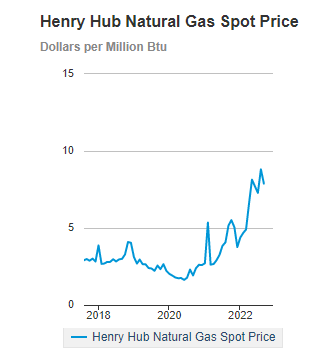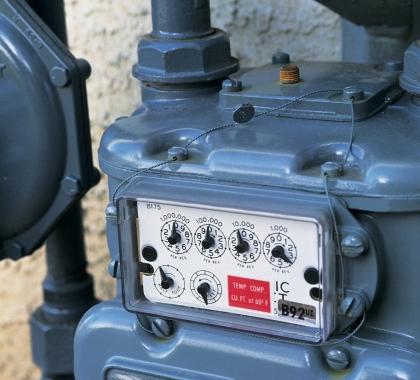ACE, the Public Alliance for Community Energy, reminds customers in the Nebraska Choice Gas program that natural gas prices across the U.S. remain higher heading into the fall and winter.
Natural gas customers in the Nebraska Choice Gas program can choose their supplier and rate option each spring during the annual selection period. The rates are set at the time of the selection period based on what the market is doing at that time. Natural gas rates in general have significantly risen the past couple of years, which will impact ACE Choice Gas customers this fall and winter.
ACE customers on a fixed rate per therm option, which includes most ACE customers, have a locked in fixed rate for natural gas. Natural gas bills will still fluctuate depending on your monthly natural gas usage.
ACE customers on the ACE WeatherShield™ rate option are on an all-inclusive fixed monthly option that includes all gas-related charges on their natural gas bill.
ACE customers on a market rate per therm option will likely be impacted by higher natural gas market prices this winter on the commodity charge portion of their natural gas bill.
Natural gas prices are projected to continue to be higher during for the Choice Gas selection period next spring so all customers may see higher rates for the 2023-24 gas year, which runs June 1, 2023-May 31, 2024.
Components of your natural gas bill
Your natural gas bill consists of separate cost components regarding the procurement and delivery of your natural gas:
- The Commodity Charge is the cost per therm for the natural gas commodity. This is set with your natural gas supplier and includes the market price for gas and costs associated with interstate pipeline delivery to a community.
- The Distribution Charge is the cost to deliver the gas locally to your home/business.
- Miscellaneous charges, taxes and fees cover things such as pipeline maintenance and regulatory t
 ax requirements.
ax requirements.
These components added together comprise a customer’s monthly gas billed rate.
Current natural gas market price in the U.S.
The market price for natural gas in the U.S. has been increasing since 2020. For perspective—in 2020, the market spot price for natural gas was in the low $2 per MMBtu range (.20 cents per therm). Since then, it has risen at times to more than $9 per MMBtu (.90 cents per therm). Currently natural gas prices are fluctuating between $6-8 dollar per MMBtu (.60-.80 cents per therm).
Factors causing current higher natural gas prices
The market price for natural gas is primarily impacted by the interplay between supply and demand. The current high market price is the result of a low supply/high demand environment. Natural gas storage levels remain significantly less than the five-year average. Contributing factors include:
- Natural gas production decreased significantly during the 2020 pandemic year.
- After the pandemic year, demand (usage) in the U.S. increased, while production lagged behind.
- More natural gas is being used for electric power generation, which contributes to lower supply. The stronger demand for natural gas by the electric power sector is due primarily to the transition to more renewable energy.
- Exports of Liquified Natural Gas (LNG) are steadily rising, especially to meet the demand in European and Asian markets. The Asian spot market is averaging $38 per MMBtu ($3.80 per therm) and Europe is at $53 ($5.30 per therm) for the upcoming winter.
- Significant demand for natural gas has kept storage levels below the five-year average. The U.S. Energy Information Administration (EIA) forecasts indicate storage levels will be 7% below the five-year average by the end of injection season in October.
What is the extended forecast for natural gas prices?
The EIA projects natural gas prices to average about $9/MMBtu through the rest of 2022 and then fall to an average of approximately $6/MMBtu in 2023 as production slowly increases to better meet demand.
How can residential customers lower their energy costs?
- Adjusting thermostats down a few degrees.
- Ensure adequate insulation levels in your attic, ceilings, exterior and basement walls and crawl spaces.
- Check for any air leaks around walls, windows, doors, light and plumbing fixtures, switches and electrical outlets.
- Turn down the temperature on your hot water heater to 125 degrees (or warm setting) and insulate it and your pipes.
- Wash only full loads of clothing and use cold water as much as possible.
Financial assistance with utility bills
The Low Income Home Energy Assistance Program (LIHEAP) is a federal financial assistance program that assists qualified families struggling to pay their utility bills. Each state has its own LIHEAP assistance program. State and local programs are listed on the federal LIHEAP Clearinghouse website: www.Energyhelp.us.





